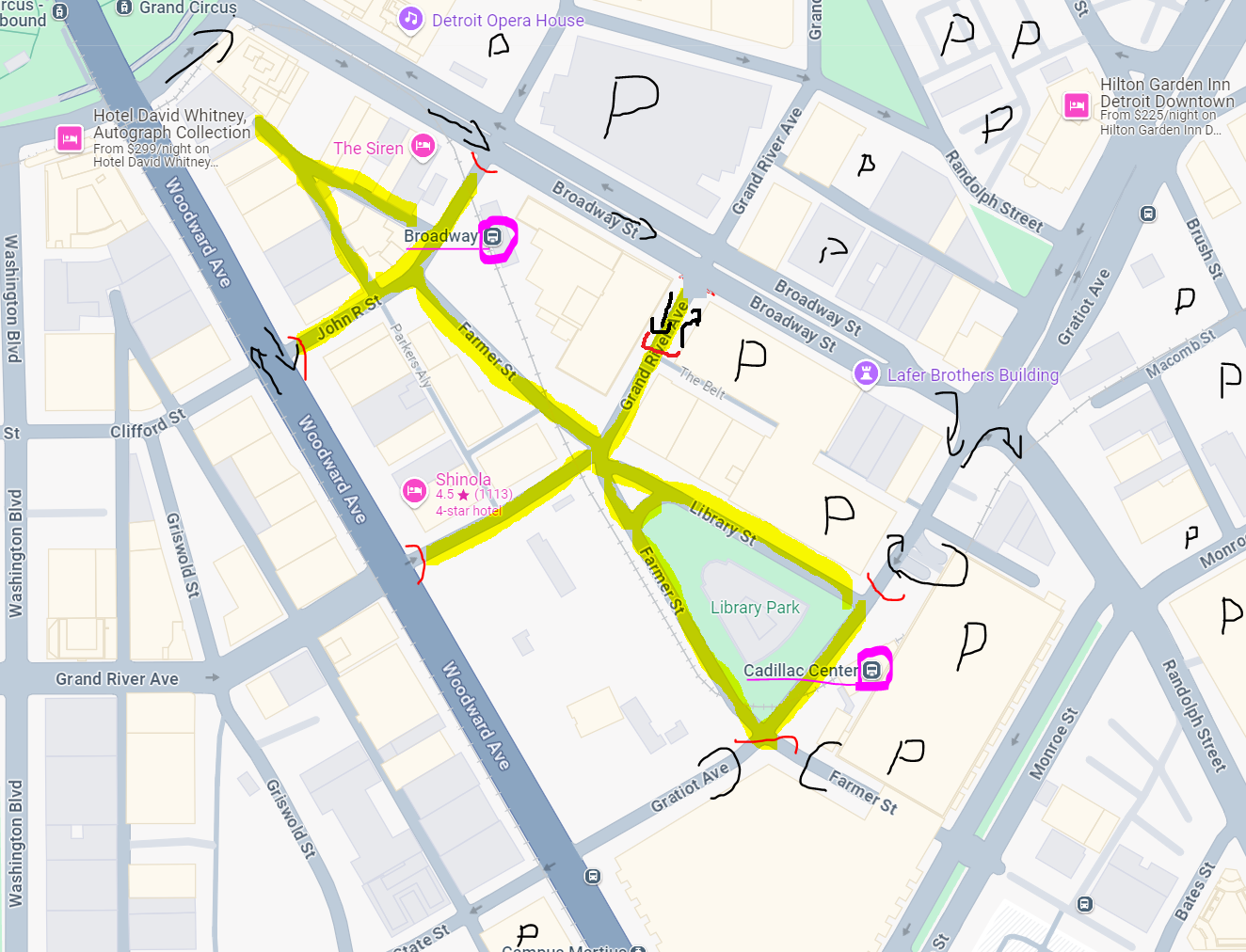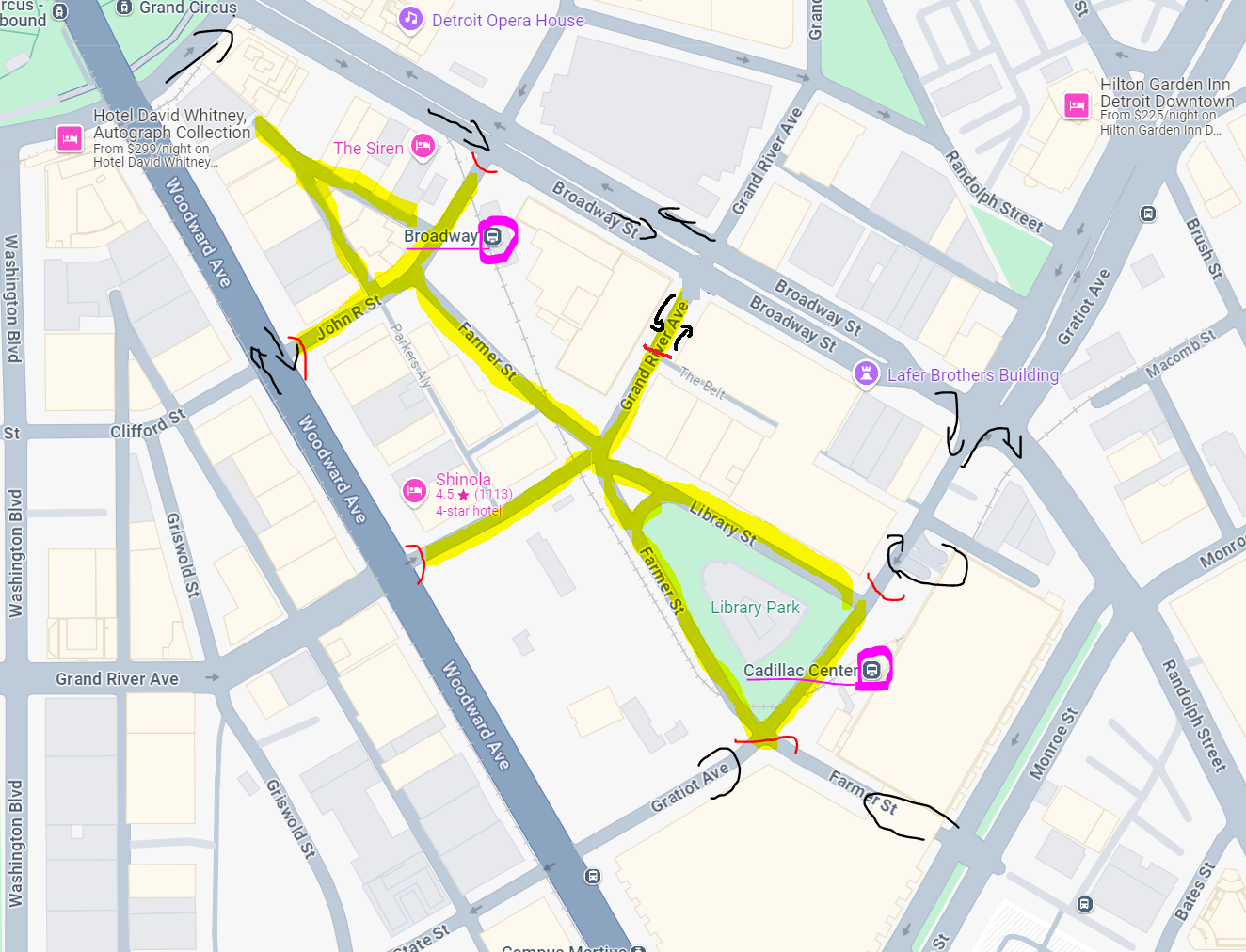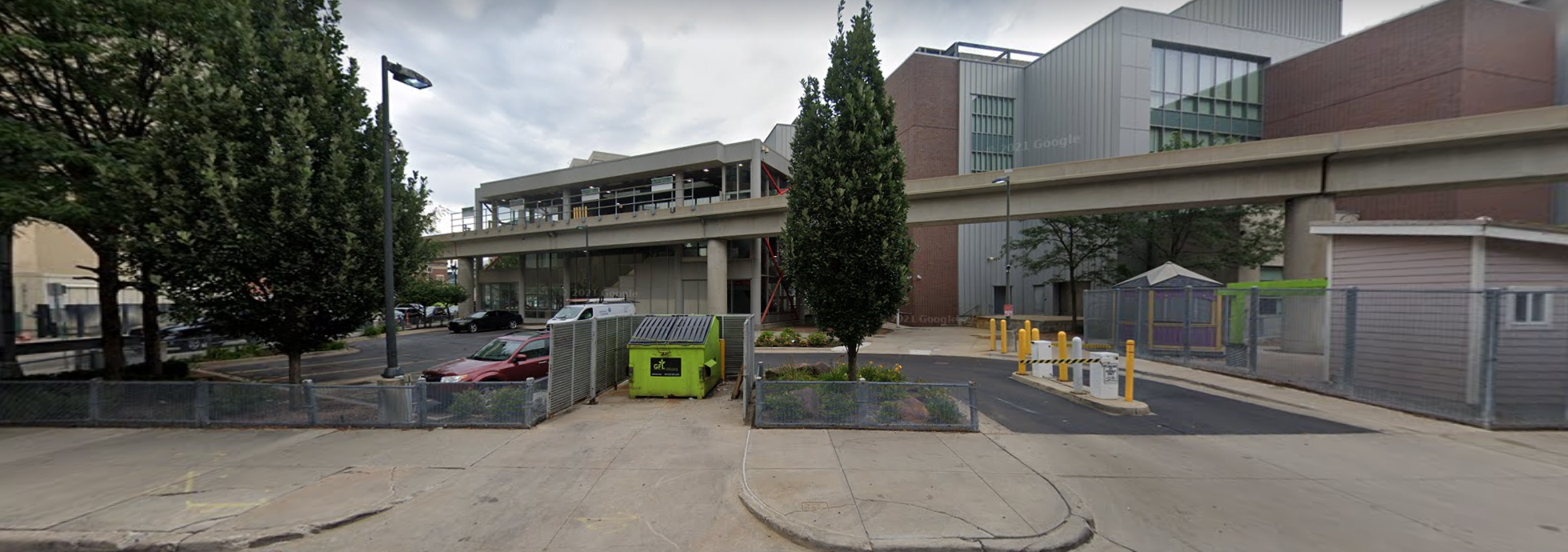Time to Pedestrianize: Transforming Downtown Detroit into a Vibrant People-Centered Space
Now is the perfect moment to push for a meaningful improvement to the areas surrounding the stations—an improvement that benefits not only transportation but the people who live, work, and visit downtown Detroit.
Let’s seize the opportunity to make a lasting, positive change by pedestrianizing key streets in the heart of our city—namely Library Street, Farmer Street, John R, and segments of Grand River and Gratiot Avenues (which fall under city jurisdiction). This vision aligns perfectly with the ongoing transformation of our downtown, including the completion of the Hudson’s project and the reopening of the Detroit Library.
Why This Makes Sense for Detroit
Pedestrianizing these streets would unlock a variety of long-term benefits, enhancing the quality of life for everyone in the city. Here’s why this vision deserves serious consideration:
Improved Traffic Flow and Safety
While it may sound counterintuitive, closing these streets to vehicles will actually improve traffic flow in the surrounding area. With the added space for pedestrians and non-motorized transportation, the traffic bottlenecks around downtown’s parking garages would lessen, reducing congestion, confusion, and even accidents. With proper loading/unloading zones and designated areas for ride-sharing, deliveries, and valet services, we would see a smoother, more organized environment than the current haphazard, car-dominated situation. This isn’t just about reducing car chaos—it’s about making the city safer and more efficient for everyone, including drivers. Connecting People to Community Amenities A pedestrianized district would make it safer and easier for families, seniors, and people with disabilities to access key amenities like the Detroit Library and the downtown YMCA. By eliminating car and truck traffic, we create a space where children can walk freely, and everyone can move about without fear of unsafe crossings. This transformation ensures that downtown is accessible to all, whether by foot, wheelchair, or bike—promoting healthier, more inclusive lifestyles.
Transforming Public Spaces with Green Infrastructure
Imagine replacing asphalt with tree-lined streets, community gardens, and green spaces that act as an oasis from the urban hustle. Not only would these areas beautify our city, but they would also improve air quality, provide natural stormwater management, and contribute to our overall environmental resiliency. These improvements help make downtown more inviting and sustainable—both now and for future generations.
Economic Growth Through Small Business Opportunities
Pedestrianization is a proven economic driver, particularly for small businesses. A car-free zone opens up valuable real estate for sidewalk cafés, pop-up shops, and outdoor markets that thrive in areas with foot traffic. Small businesses, often the backbone of vibrant cities, would have an opportunity to grow and reach new customers in ways that are impossible when the streets are dedicated solely to cars. Plus, local restaurants like Olin Bar & Kitchen could expand their outdoor dining offerings, attracting more customers while enjoying the absence of car noise and exhaust fumes. The pedestrianized space becomes a dynamic, community-driven destination that supports a variety of local businesses
Reimagining Space for the YMCA’s Growth
The YMCA, which is already working to expand its membership base, would benefit tremendously from this transformation. Instead of using valuable land for a few parking spaces, the YMCA could use this newly available space to create more community-oriented outdoor areas. Whether it’s an outdoor fitness space, a playground, or community gathering spots, these changes would draw in new members who are looking for a more engaging and accessible environment.
Convenient Access via the People Mover
This pedestrianized area is perfectly connected to two key People Mover stations, making it easy for people from all over downtown to access the space without needing a car. The People Mover is an affordable, reliable, and efficient way for residents, workers, and visitors to travel to the heart of downtown, ensuring that the pedestrianized district is accessible to a broad range of people. This connection reduces the reliance on cars, helping to alleviate parking concerns and encouraging more sustainable forms of transportation, all while making the area a vibrant destination for foot traffic. Affordable and Simple Implementation The best part? Implementing this transformation can be done quickly and affordably. Much of Farmer Street has already been closed for construction, and many of the streets in question are occasionally closed for other projects or events. By temporarily installing a few simple planters, bollards, or barriers, we can create a vibrant pedestrian zone with little upfront cost. A pilot program could allow us to test the concept and refine it, adjusting based on feedback from the community and businesses.
Alleviating Concerns:
Parking is Still Nearby

It Isn’t a Novel Concept
Efforts to create pedestrian spaces aren’t new. We’ve seen success all over the world, the country, and even within the State and City. Places like the Distillery District in Toronto have topped must-see destination lists for visitors to the city. Pearl Street Mall in Boulder, Colorado has allowed the city’s downtown to showcase its culture and arts in an accessible way. In Michigan, we see that Kalamazoo turned a portion of Burdick Street into the Kalamazoo mall way back in the late 50s to be the first permanent pedestrian mall in North America. Looking just around the corner we have Capitol Park in Detroit expanded to allow for more walkability in the downtown. Everywhere we look these improvements make for a more vibrant and resilient place.
Conclusion: A Step Toward a More Vibrant Detroit
The pedestrianization of these key downtown streets is more than just a transportation idea—it’s about creating a city that puts people first. It’s about a Detroit that’s safer, greener, and more economically resilient. It’s about reimagining our public spaces to meet the needs of all Detroiters, especially as we witness major changes happening downtown. With a simple, low-cost pilot, we can see the benefits firsthand and pave the way for a more livable, sustainable Detroit. Now is the time. Let’s make this vision a reality!


